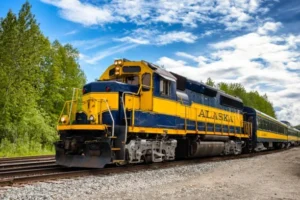Flight diversions in the U.S. have made headlines in recent months, with cases ranging from severe turbulence and unexpected technical faults to airport infrastructure mismatches. While these incidents can be stressful for passengers, each one provides crucial insights into aviation safety, operational preparedness, and the evolving challenges airlines face.

1. Introduction: When Journeys Take an Unexpected Turn
Flight diversions, when aircraft land at a different airport than planned, are rare but impactful. Recent events underscore how varied and complex the reasons can be: from technical glitches and weather anomalies to infrastructure mismatches and emergent safety protocols. Each diversion teaches the industry invaluable lessons.
2. Understanding the Common Triggers
Aviation experts frequently highlight several primary causes behind diversions:
- Weather-related hazards: storms, wind shear, low visibility, or turbulence can force reroutes.
- Technical or mechanical issues: from engine failures to flap malfunctions, technical faults are among the top causes.
- Airport limitations or mismatches: sometimes infrastructure isn’t fit for the aircraft type, triggering unexpected reroutes.
- Operational emergencies: medical crises or cabin disturbances can necessitate swift diversions.
- Safety and security concerns: rising turbulence tied to climate change is creating new risks in-flight.
3. Notable Recent U.S. Diversion Cases
JetBlue Airbus A320 Emergency at JFK
A JetBlue flight to Orlando experienced a catastrophic engine failure shortly after takeoff; one engine was “destroyed and torched out.” The aircraft diverted to JFK and landed safely.
Key takeaway: The pilot’s decisiveness and training were crucial in averting a tragedy, highlighting the importance of emergency preparation.
American Airlines: Denied Access Due to Aircraft Size
On June 2, 2025, Flight AA780 was rerouted to Rome after it was discovered that the Boeing 787 9 used was too large for Naples’ runway safety requirements. Passengers had to bus the final 140 miles to their destination.
Key takeaway: Accurate aircraft-runway compatibility checks are vital well before departure; a planning misalignment can cascade into major disruptions.
Delta Airlines Diversion to Los Angeles
Mechanical faults remain a leading reason behind diversions. A widely discussed example is the Delta DL275 diversion to LAX, which highlighted how quickly flight crews must act when safety indicators demand an immediate landing. Passengers were safely rerouted, but the incident underscores how even long-haul flights can face abrupt disruptions.
Lesson: Quick decision-making paired with thorough crew training ensures that safety is prioritized above all else.
United Airlines Diversion
Technical anomalies also led to the UA770 emergency landing, when a Chicago-bound United Airlines flight was forced to divert mid-route. Though inconvenient for passengers, the episode illustrated the efficiency of diversion protocols when executed correctly.
Lesson: Having strong diversion strategies and alternate landing plans ensures operational continuity during emergencies
Prolonged Detour: American Airlines Flight to Tokyo
Flight 167 en route from JFK to Tokyo diverted to Dallas after a maintenance issue surfaced mid-flight. The detour spanned 12 hours, with passengers housed overnight and rebooked.
Key takeaway: For long-haul flights, having robust diversion plans, including alternate airports with rebooking capabilities and passenger care, is essential.
Emerging Turbulence Risks
A Delta flight had to divert after severe turbulence injured 25 passengers. This incident reflects the growing influence of climate-induced clear-air turbulence, which is increasingly common and unpredictable.
Key takeaway: Continuous investment in weather detection technology and adaptive in-flight protocols (e.g., timely seatbelt enforcement) is becoming a must-have.
Other Recent Disruptions Worth Noting
- American Airlines mechanical failure after takeoff: Flight 449 returned to Des Moines, investigation linked the issue to possible maintenance flaws, echoing earlier engine fires caused by loose parts.
- Airport diversions due to regional weather pressure: In March 2025, Denver International faced severe winds that forced 24 flights to reroute to Colorado Springs, stressing the smaller airport’s systems.
United Airlines’ series of emergencies:
Flight UA770 diverted from Barcelona to Chicago due to a technical anomaly. It’s one of several diversions United faced in 2025, illustrating operational challenges across complex routes.
4. Lessons Learned: Safety First, Always
From analyzing these incidents, several clear lessons emerge:
- Proactive Maintenance & Pre-Flight Checks: Many incidents stem from mechanical or technical lapses; rigorous inspections and trend tracking are critical.
- Infrastructure Compatibility: Ensuring airports meet aircraft demands, like runway length and rescue capabilities, is non-negotiable.
- Weather Preparedness: Advanced forecasting and adaptability to evolving patterns, especially turbulence, must be embedded into operational practices.
- Diversion Planning: Clear protocols for selecting alternates, passenger communication, rebooking, and accommodations must be fail-safe.
- Crew Training & Decision Authority: Empowering flight crews to make immediate, safety-first decisions, like in the JetBlue case, can save lives.
- Transparent Communication: Passengers deserve clarity, empathy, and efficient support in the aftermath; human-centric responses matter.
5. Conclusion: Turning Disruption into Opportunity
Flight diversions can be stressful, but they also reveal the resilience and adaptability of the aviation system. Each incident underscores the importance of vigilance, coordination, and ongoing improvement. As aircraft, climate, and infrastructure evolve, so too must our approach to safety and passenger care.
By turning these disruptions into lessons, airlines, regulators, and travelers all benefit, helping pave routes that are safer, smarter, and more passenger-centered.












